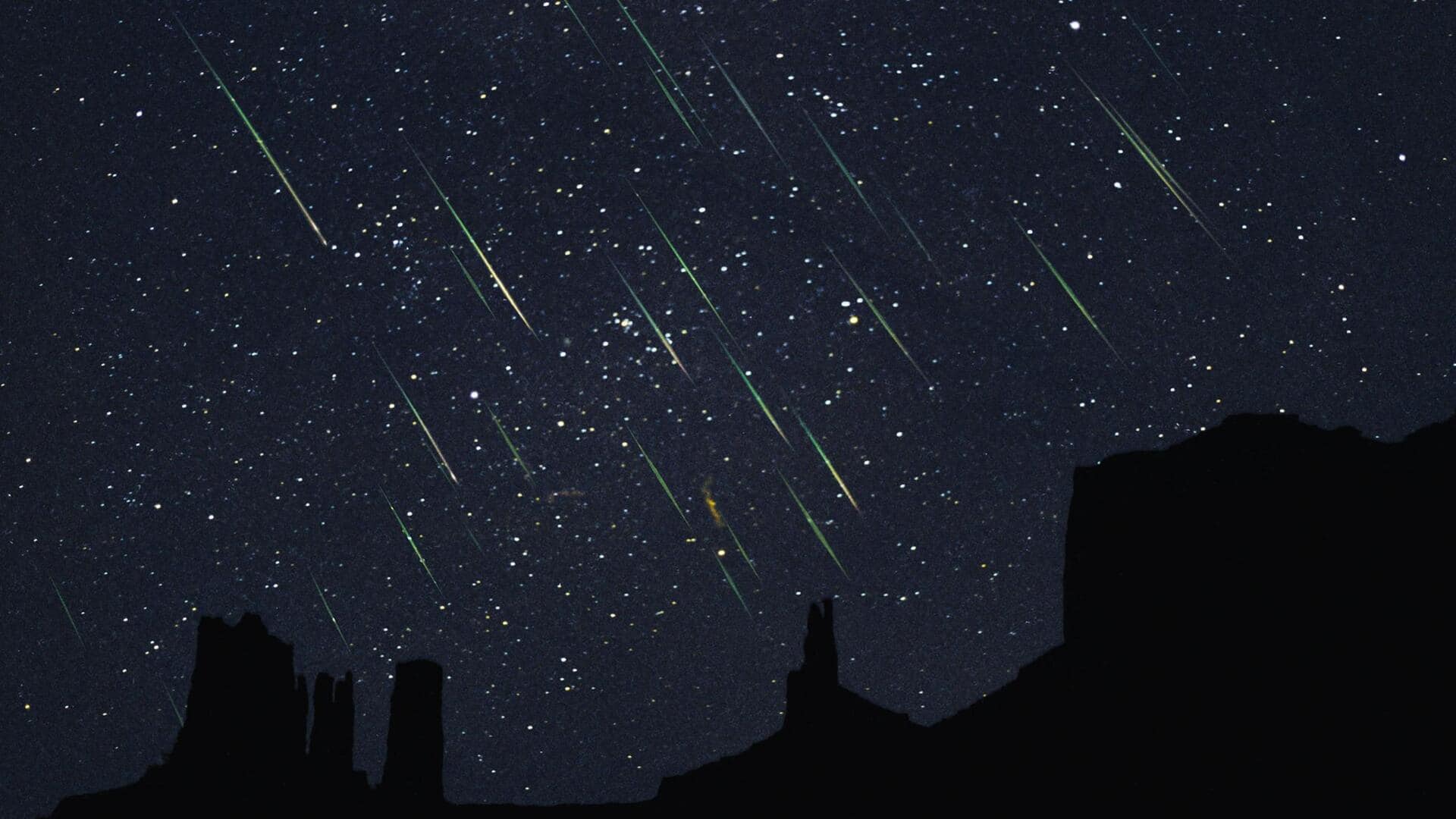
Leonid meteor shower starts today: How to watch shooting stars
What's the story
The Leonid meteor shower, renowned for its swift and colorful meteors, will be visible starting today right up till December 2, per NASA. It is expected to peak on November 18. Leonids are among the major meteor showers of the year and among the fastest, traveling at 70km/s. They are also called Earth-grazers meteors as they pass close to the horizon. Under optimal viewing conditions, you can expect to see around 15 meteors per hour.
Details
What causes the Leonid meteor shower?
The Leonid meteor shower occurs when Earth travels through the remnants left by a comet, in this case, Comet Tempel-Tuttle. As the comet revolves around the Sun, it leaves behind a path of debris that enters Earth's atmosphere at speeds reaching 70km/s, per Royal Museums Greenwich. When these particles enter Earth's atmosphere, they vaporize, forming light streaks called meteors. Interestingly, the meteor streaks can originate from debris particles that are as small as a grain of sand.
Viewing
Moon phase and viewing conditions
This year, the Moon will be in its waxing crescent phase during the peak of the Leonid meteor shower, offering optimal viewing conditions. To increase your chances of spotting meteors, it's recommended to observe late on the night of November 17 until dawn on November 18. The morning of November 17 may also present worthwhile viewing opportunities. The point from where the Leonid meteors appear to originate, or the radiant, is situated in the constellation Leo, hence the name.
Insights
Leonid meteor storms and historical events
Roughly every 33 years, in line with Comet Tempel-Tuttle's orbital period, the Leonids generate meteor "storms" featuring hundreds or even thousands of shooting stars visible per hour. Memorable storms took place in 1799, 1833, 1866, 1966, and 1999-2001. The 1833 storm was especially remarkable, with an estimated 100,000 meteors per hour. Per NASA, the 1966 shower was also notable, with thousands of meteors passing through Earth's atmosphere during a 15-minute duration. The last such meteor storm happened in 2002.
Facts
How to watch the Leonid meteor shower
To observe the Leonid meteor shower, locate a secure area away from bright lights. Allow your eyes 30 minutes to adjust to the night sky. Do note that Leonid meteors can be spotted all over the sky, but their trajectories appear to stem from the constellation Leo. The meteors can be viewed with the naked eye, so there's no need for binoculars or a telescope. Another meteor shower is currently active, the Northern Taurids, which peaks on November 12.